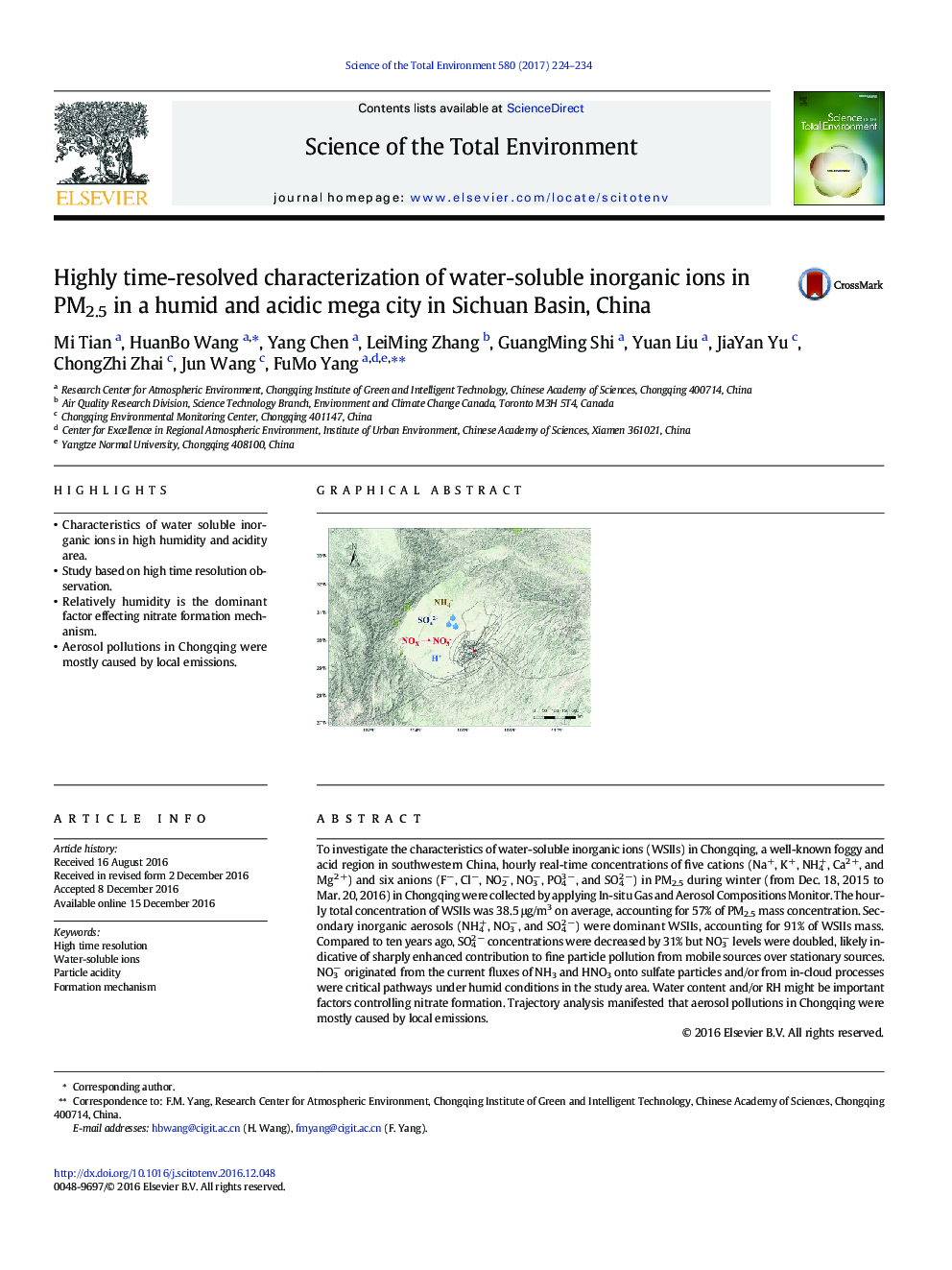| Article ID | Journal | Published Year | Pages | File Type |
|---|---|---|---|---|
| 5752066 | Science of The Total Environment | 2017 | 11 Pages |
â¢Characteristics of water soluble inorganic ions in high humidity and acidity area.â¢Study based on high time resolution observation.â¢Relatively humidity is the dominant factor effecting nitrate formation mechanism.â¢Aerosol pollutions in Chongqing were mostly caused by local emissions.
To investigate the characteristics of water-soluble inorganic ions (WSIIs) in Chongqing, a well-known foggy and acid region in southwestern China, hourly real-time concentrations of five cations (Na+, K+, NH4+, Ca2 +, and Mg2 +) and six anions (Fâ, Clâ, NO2â, NO3â, PO43 â, and SO42 â) in PM2.5 during winter (from Dec. 18, 2015 to Mar. 20, 2016) in Chongqing were collected by applying In-situ Gas and Aerosol Compositions Monitor. The hourly total concentration of WSIIs was 38.5 μg/m3 on average, accounting for 57% of PM2.5 mass concentration. Secondary inorganic aerosols (NH4+, NO3â, and SO42 â) were dominant WSIIs, accounting for 91% of WSIIs mass. Compared to ten years ago, SO42 â concentrations were decreased by 31% but NO3â levels were doubled, likely indicative of sharply enhanced contribution to fine particle pollution from mobile sources over stationary sources. NO3â originated from the current fluxes of NH3 and HNO3 onto sulfate particles and/or from in-cloud processes were critical pathways under humid conditions in the study area. Water content and/or RH might be important factors controlling nitrate formation. Trajectory analysis manifested that aerosol pollutions in Chongqing were mostly caused by local emissions.
Graphical abstractDownload high-res image (568KB)Download full-size image
